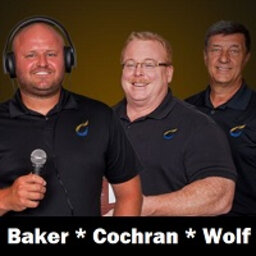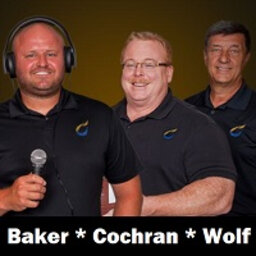Mike Strahle of Westerville: U.S. Marines' Lima Company, Iraq War
ThisWeek Community News: Marching Orders
Central Ohio military veterans, ranging from World War II to the most recent conflicts and battles even in Yemen, share their war stories with ThisWee…Mike Strahle, 34, of Westerville served in the Iraq War in 2005 with the Marine Corps' Columbus-based Company L (known as Lima Company), 3rd Battalion, 25th Regiment, as part of Regimental Combat Team 2.
Strahle was with the unit when it conducted anti-insurgency operations in Iraq's Al Anbar province along the Syrian border and later helped launch Operation Matador (the Battle of Al Qaim) on May 8, 2005.
Strahle returned to the United States with injuries he had sustained when the vehicle he was riding in was hit by a roadside bomb May 11, 2005.
He is the executive director of the Eyes of Freedom, a traveling exhibit of portraits, painted by then-Ohio artist Anita Miller, depicting the 22 Marines and one Navy corpsman who died in Iraq with Lima Company. The exhibit also includes a bronze sculpture, "The Silent Battle," which characterizes the struggle of veterans adapting to civilian life.
Strahle said he knew those who died in Iraq while serving with Lima.
He was born and raised in Bryan and graduated from Bryan High School in 2003.
His interest in the military was motivated by the Sept. 11 terrorist attacks and "the gut feeling of helplessness when you're seeing the United States attacked in a way that hadn't happened in my lifetime."
He said he was interested in becoming an officer and joined the ROTC program at Ohio State University.
"They made it sound like my ... officer career would be ... much better suited if I had some enlistment time under my belt first," he said.
He joined the Marine Corps Reserve when he was "young and still pretty angry about 9/11."
Lima preceded its Iraq deployment with two months in California, training in security, surveillance and urban operations and getting used to a hot climate.
Upon arriving in Iraq, the unit conducted a number of missions in cities, he said.
"We were getting intelligence from any number of sources over there where these insurgents were moving," he said. "An insurgent tactic at the time was to take over part of a city or a few houses on a block" while trying to avoid the Marines, he said.
During Lima's operations -- many conducted at night -- insurgents would engage the Marines or flee and then would be engaged or rounded up, he said.
"That was the pace early on. ... We were always busy," he said. "But Operation Matador was completely different."
The Marines had intelligence about major strongholds in certain cities, and Matador would be a large offensive task force, he said. Lima was prepared "for pretty much the whole city to be angry with us ... or to be prepared for our arrival."
The unit began mobilizing before sunrise May 8, "engaging in fairly heavy combat most of the day," with a few men injured by machine guns or hand grenades, he said.
During what probably would have been the last house clearing of the day, Cpl. Dustin Derga and Sgt. Anthony Goodwin were killed. Lance Cpl. Nicholas Erdy, who was killed later in the deployment, "performed amazingly" and pulled several wounded men from the house before it was hit by an Air Force bomb, Strahle said.
Derga, Strahle said, was a team leader.
"He was a very close friend of mine and one of the funniest guys in the platoon," he said. But "when things would go wrong, he had this uncanny ability to flip a switch" and change from "the class clown" to a "damn fine Marine," he said.
Derga was killed by machine-gun fire while approaching the house, Strahle said.
Several tank rounds were fired into the house before Goodwin took a team inside, Strahle said.
The insurgents had prepared a dug-in fortified area inside, Strahle said, and while the tank rounds probably left the insurgents "blind, deaf and dumb," they were still alive. From a lower level, he said, "they opened up fire right through the floor," killing Goodwin and injuring two or three others.
Goodwin was a veteran of the Marines' 1st Force Reconnaissance Company, Strahle said, and was "the one to teach us we really didn't know anything and we needed to listen up."
Goodwin's capability and effectiveness as a leader led officers to give his unit several offensive tasks, Strahle said.
"We had the intelligence, and we knew that this whole city was basically bad guys," Strahle said. "We were ordered to protect the civilian population there as best we could, and we did. We did a phenomenal job."
On May 11, Strahle was riding in an assault amphibious vehicle second or third in line in a convoy.
The AAVs, which were fully tracked amphibious landing vehicles, had no windows, so a ceiling hatch was opened to allow three or four Marines to stand on a bench with their heads and chests outside the hatch to improve observation of the surrounding area.
Strahle was standing in the open hatch when an improvised explosive device "blew up right under my feet," he said. The blast killed six of the 16 or 17 on board and threw Strahle into the air.
He landed face first in a ditch and began to bandage his injured stomach after failing to find his missing gun.
The unit's Navy corpsmen, "who were asked to do a lot with very little, ... hands down, they saved my life," he said.
With chest, leg and intestinal injuries, Strahle was put on an Army Sikorsky UH-60 Black Hawk helicopter 20 minutes after the explosion.
He underwent surgeries in Germany before being transferred to the Walter Reed National Military Medical Center in Bethesda, Maryland, where his family was waiting for him.
On Aug. 3, 2005, 14 men with Lima were killed by a roadside bomb. The effect of that incident, Strahle said, "rang all the way up to military generals and the president."
The Marines' AAVs had no protection from explosions beneath the vehicle, he said, but the already-developed MRAP (mine-resistant ambush-protected) vehicles did.
The military expanded its use of MRAPs and began to rely more on helicopters to move troops between cities, despite the higher costs, he said.
"Fourteen guys had to pass to just to kind of put an exclamation point on the problem," he said.
Upon Lima's return to Columbus in October 2005, the unit received an enthusiastic welcome.
Thousands of residents lined Hamilton Road, waving rain-dampened signs and cheering as Lima's motorcade traveled from what was then Port Columbus International Airport to Rickenbacker International Airport.
Strahle said he received a communitywide welcome home when he returned to Bryan.
He had a coaching job and later worked at JPMorgan Chase & Co. but soon realized he was drinking too much.
Miller debuted her Eyes of Freedom exhibit -- life-size portraits of Lima's fallen -- in 2008 at the Ohio Statehouse. In 2011, Strahle asked her if the portraits could be displayed at a Pickerington fundraiser honoring Derga.
Previously, the exhibit was on display for several months at a time, each at a different site. With Strahle's involvement after the Pickerington event, the Eyes of Freedom became a traveling display that since has made nearly 300 stops around the U.S.
The display has a healing effect on all veterans, he said, including those from the Vietnam War. "The Silent Battle" sculpture depicts the postservice struggles of veterans and honors those lost to suicide, he said. Otherwise, "they're not treated the same way. They're not memorialized the same way," he said.
Strahle, who retired from the Marines in 2007, said veterans who are struggling to adjust to civilian life should reach out to other veterans for support.
"As soon as I got involved with Eyes of Freedom, it just kind of made it better," he said.
Strahle's decorations include the Purple Heart, the Combat Action Ribbon, the Meritorious Service Medal, the Iraq Campaign Medal, the Global War on Terrorism Expeditionary and Service Medals and the Armed Services Reserve Medal.
This podcast was hosted and produced by Scott Hummel, ThisWeek Community News assistant managing editor, digital. This profile was written by Paul Comstock.
 From the Newsroom: ThisWeek Community News
From the Newsroom: ThisWeek Community News


